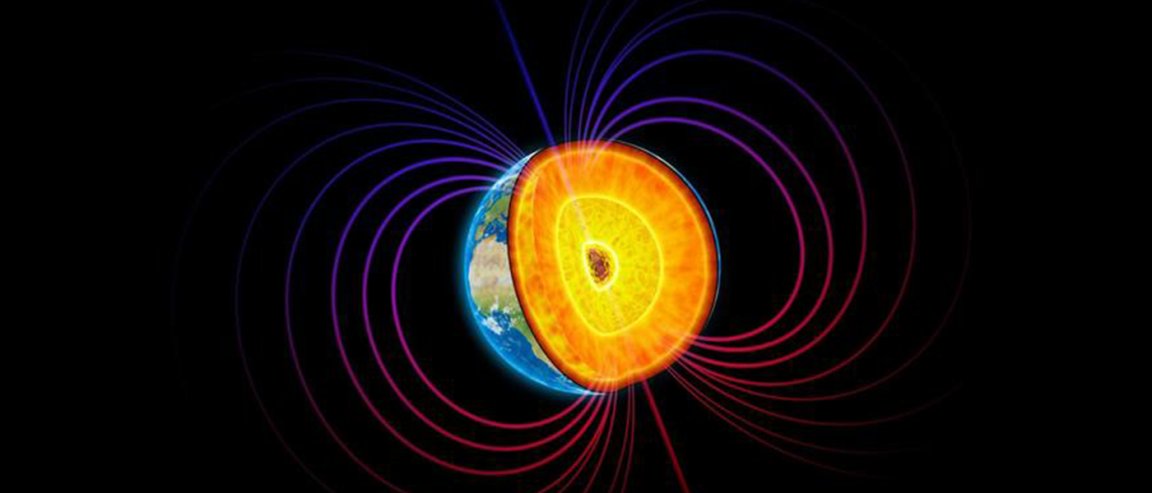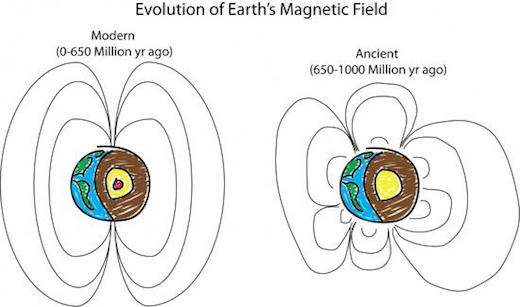
Chaotic Phase
Carnegie scientist Peter Driscoll has just published a study stating that during Earth’s earlier age, it did not always have two poles as it does today. Instead, there were times when it had weaker magnetic fields coming from several poles, coming in all sorts of directions.
Today, our planet’s outer core has liquid iron that moves, driven by heat escaping from the inner core as it solidifies. This motion is responsible for the phenomenon, called “geodynamo,”creates the magnetic field that helps protect Earth from the harsh conditions of outer space. However, the Earth’s inner core was not always solid and scientists wanted to know when it happened and how it affected the planet’s magnetic field. This meant investigating phenomena dating as far back as 4.5 billion years, which is exactly what Driscoll did.
Scientists can reconstruct the state of Earth’s magnetic record by analyzing ancient rocks since they still contain signatures of magnetic polarity from when they were formed. What they found in these signatures is far from what we’ve always thought of our poles.

This evidence suggests that the Earth’s magnetic field going off-location, or even somewhat haywire, is not something new. “What I found was a surprising amount of variability,” Driscoll said. He continued, “These new models do not support the assumption of a stable dipole field at all times, contrary to what we’d previously believed.”
Back to Order
Driscoll modeled the Earth’s thermal history 4.5 billion years back and estimated that the inner core started solidifying 650 million years ago. Further modeling using 3D dynamo simulations were made and his analysis indicates that the Earth did start with two strong poles, but during some stages, it had several weaker magnetic poles that fluctuated chaotically in intensity and direction. It was after the core started to solidify around 650 million years ago that the magnetic field went back to its current orderly, strong dipolar state.
“These findings could offer an explanation for the bizarre fluctuations in magnetic field direction seen in the geologic record around 600 to 700 million years ago,” Driscoll added. “And there are widespread implications for such dramatic field changes.”